Wildflower Season is Here!
By: Matt Hodges
Here at Blazin’ Paddles, we are fervent observers of changes in flora and fauna across the desert landscape and in the Black Canyon. Springtime yields the bloom of various wildflowers and a burst of color that we all look forward to. For this reason, springtime is a great time to book a tour with us, and there are many flowers that can be observed from your kayak as we paddle and hike the banks of the Colorado River. Because of our dry climate and sparse rainfall, desert wildflowers aren’t around for long, so if you want a chance to observe for yourself, book a tour today!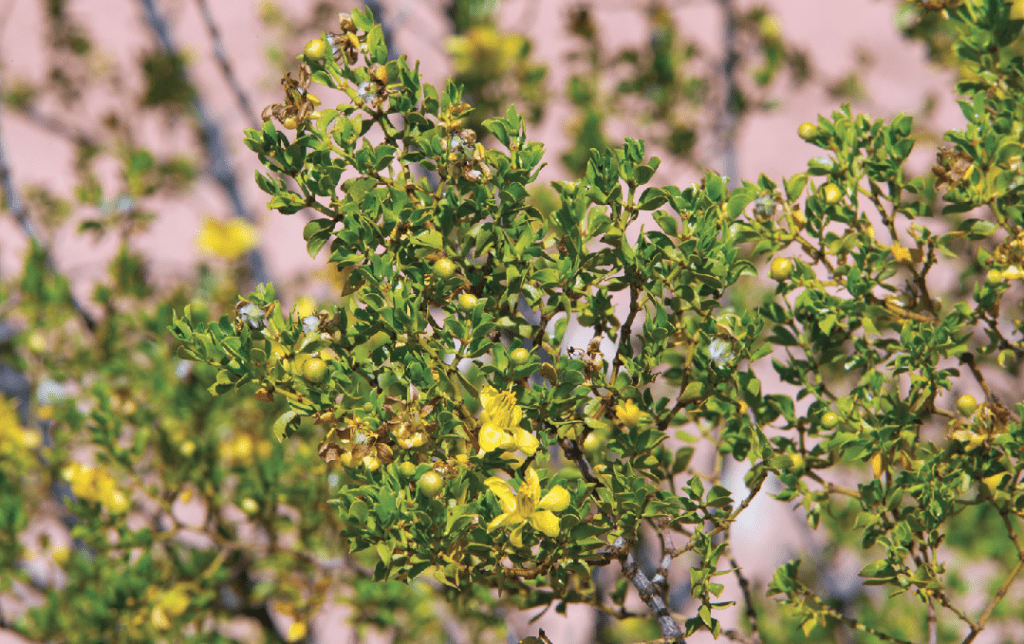
Most of the flowers that you’ll find on our tour bloom within the ecological community referred to as the Creosote-Bush Community. Creosote bushes are the most conspicuous plants found in this region and this time of year rainfall gives them a vibrant, almost neon green appearance, and after rain creosote gives off the signature smell of “desert rain” that people often refer to. This community ranges in elevation from 500-3000 feet. Rainfall is low here, about 3-4 inches per year. Here are a few blooming species you can expect to see from your kayak:
Brittle Bush:
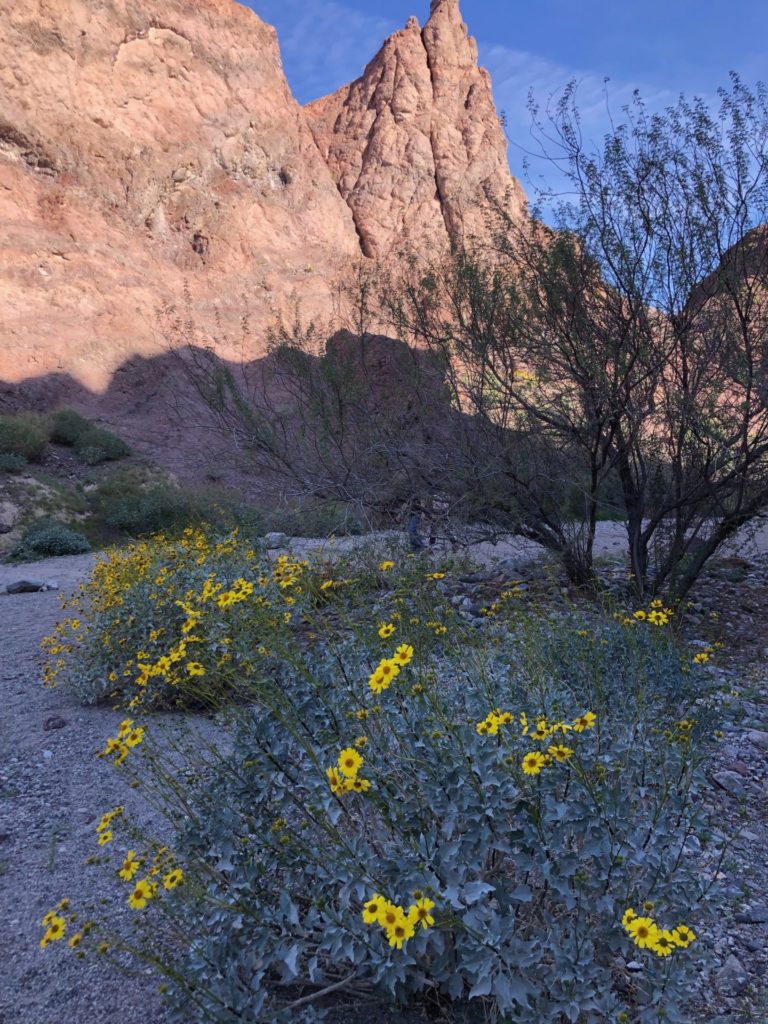
Brittlebush (Encelia farinosa) is a medium-sized rounded shrub. It has long, oval, silver-gray leaves that are somewhat fuzzy. The branches are brittle and woody, and contain a fragrant resin. In the late winter and early spring small yellow flowers form on long stalks well above the leafy stems.
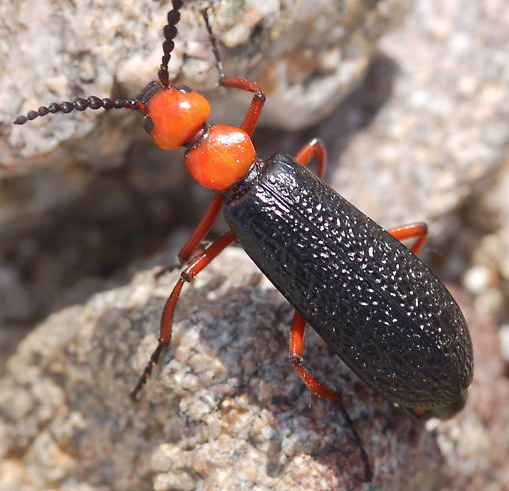
Caution: In the spring an insect called the Blister Beetle feeds on the pedals of the Brittlebush. They release a toxin that causes painful blisters to humans, so watch where you stick your nose!
Purple Sage:
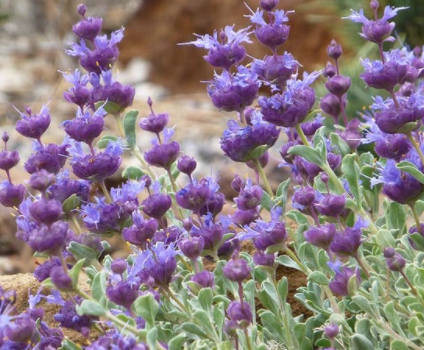
Purple Sage (Salvia dorrii) is a woody subshrub reaching 4–28 inches in height and width. Their grey-green leaves are narrow, are tapered at the base and rounded at the tip. Purple sage has a pleasant, mildly intoxicating minty aroma, with the scent released when the foliage is crushed. It is often mistaken for Desert Lavender.
Beavertail Cactus:
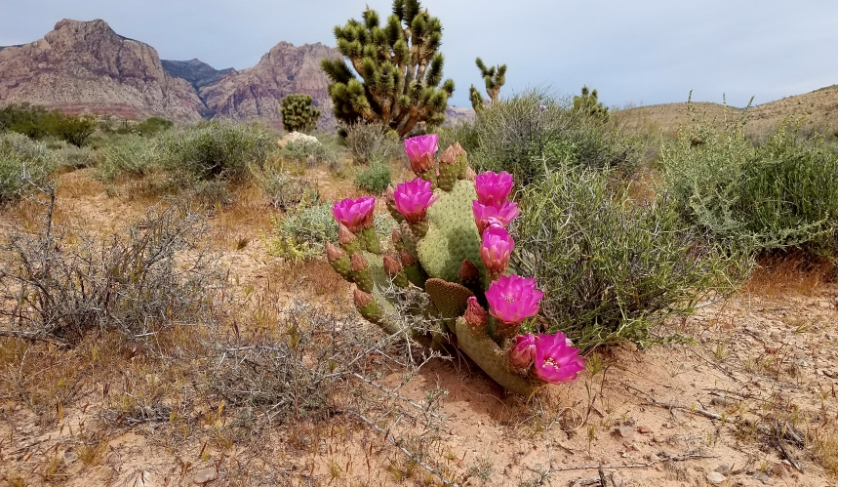
Beavertail cactus (Opuntia Basilaris) low, spreading cactus with short bristles grows 6 to 12 inches high and up to 6 feet wide. The gray-green, jointed stems are wide and flat resembling the tail of a beaver. The stems grow in clumps with vibrant pink flowers from the top edge of the joints. Flowers are followed by a brownish-gray, oval fruit that desert tortoise, ground squirrels, and other wildlife will eat the fruits for a sugary treat.
Rubber Rabbitbush:
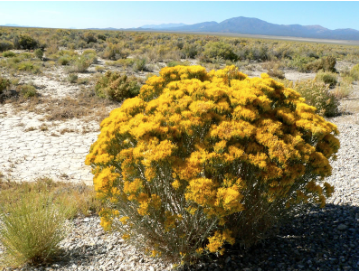
The common rubber rabbitbrush (Ericameria Nauseosa) is typically distinguished by having whitish to green flexible stems, felt-like matted hairs and alternating grey-is leaves. Shrubs are rounded and generally two to five feet tall, and when in bloom their flower heads are made up of 5 small, yellow, tubular flowers.
There are many more wildflowers that can be observed in our neck of the woods. Book a tour today for information from our exceptional guides! You can also stop by our office at the Hoover Dam Lodge to pick up a copy of our plant species pocket guide to take on your own wildflower hunting adventures!
